Mission: Build a BC-611 Filament Battery Supply.
Overview: Two D cells are wired in parallel and held together with a spacer made of a piece of standard PVC coupling and mailing tape. No modification to the BC-611 is necessary. Simple but easy to fabricate. More reliable and efficient than the FT-501 battery holder.
WARNING: I have
had several reports of Duracell and Energizer batteries overheating when
used in parallel. Do not use them in parallel. One cell may end up charging
the other cell and create a hazzard. Do not store the batteries while
configured in parallel.
NEW UPDATE:
Due to the much improved D Cells available, I no longer use two of them
in parallel. I just use one and use the other one as a spacer and a spare.
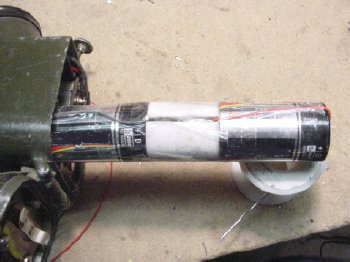
The finished unit ready for insertion into the Talkie.
 .
.
Parts List: PVC coupling, two D cells, some wire and mailing tape.
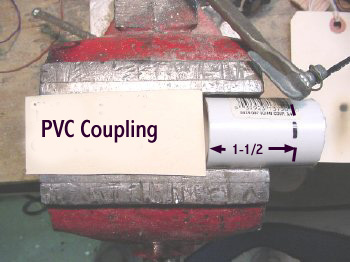
Trim the PVC coupling to a length of 1 and 1/2 inches
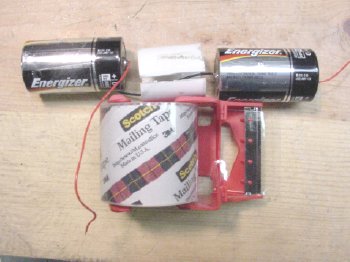
The PVC coupling is slit length ways with a hack saw to allow access to the ends of the batteries. Mailing tape is used to secure the assembly and to provide insulation of the wires.

The Red and black wires sneak down into the
PVC slit to make the soldered contact with the batteries.
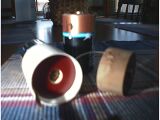
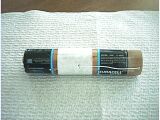
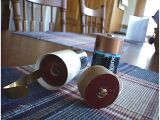
Here are some shots of Jerry's K9HXA filament battery supply. He turned the PVC and phenolic stock on a lathe and really did a fine job.
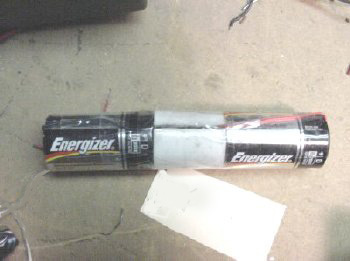
FINI
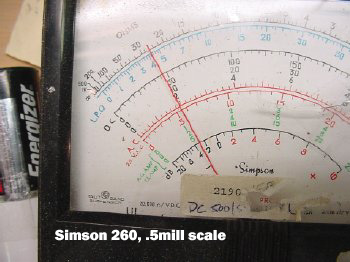
I know the batteries are in parallel and there will
be some "internal drainage" as one cell will be slightly different
in voltage than the other. I measured less than one tenth of a milliamp
current draw for a couple of days. Then I got bored with the test, best
advice just forget about it. If you lose sleep over the drainage then
unhook one wire after the mission.
Please read WARNING at beginning of this page.
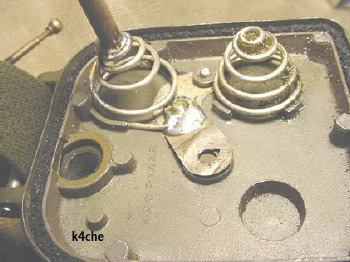
Do your self a favor and solder the springs to the main ground contacts in the top of the radio.
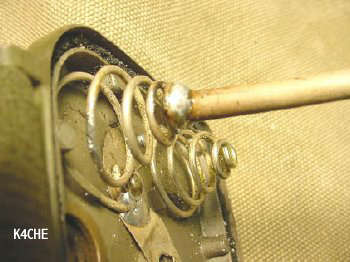 Solder
the shaft of the "A" battery contact
and spacer to the spring. . Since we are dealing with only 1.5 volts a max
effort should be made to improve the efficiency of the system, i.e. reduce
losses due to poor electrical contact.
Solder
the shaft of the "A" battery contact
and spacer to the spring. . Since we are dealing with only 1.5 volts a max
effort should be made to improve the efficiency of the system, i.e. reduce
losses due to poor electrical contact.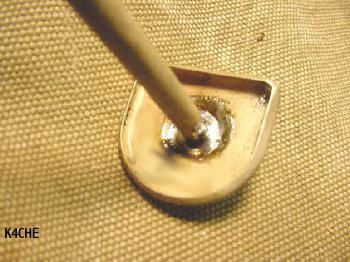
Solder the area between the actual battery contact and the spacer shaft.
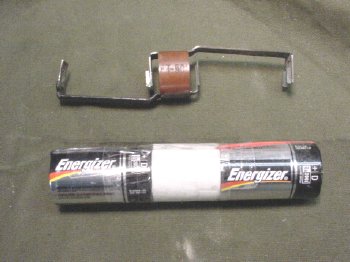
If you don't have a FT-50 are perhaps you dislike the FT-50 battery holder then build this pack. Actually I think this homebrew pack is better and more reliable. No fussy contacts etc. Make up an extra pack for the hamfest. Takes a licken and keeps on ticken.
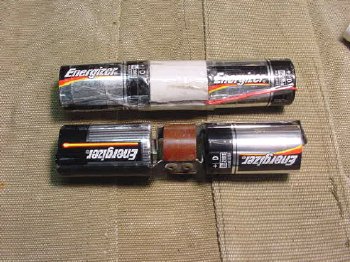
Comparison of the two packs

Ready for the mission.